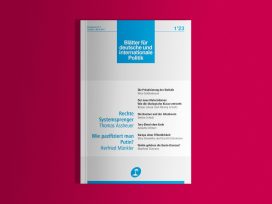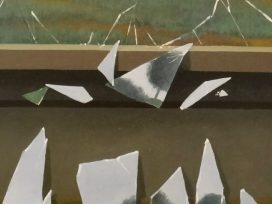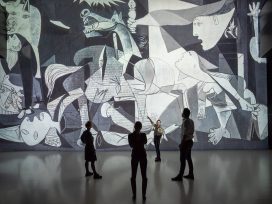Droplets echo in the dark from speakers. The screech of metal, screams and murmurs follow. The public whispers in front of paintings and installations of wooden and fragmented tools. Under their feet is a plastic cover that looks like the floor of a watery basement or prison cell.
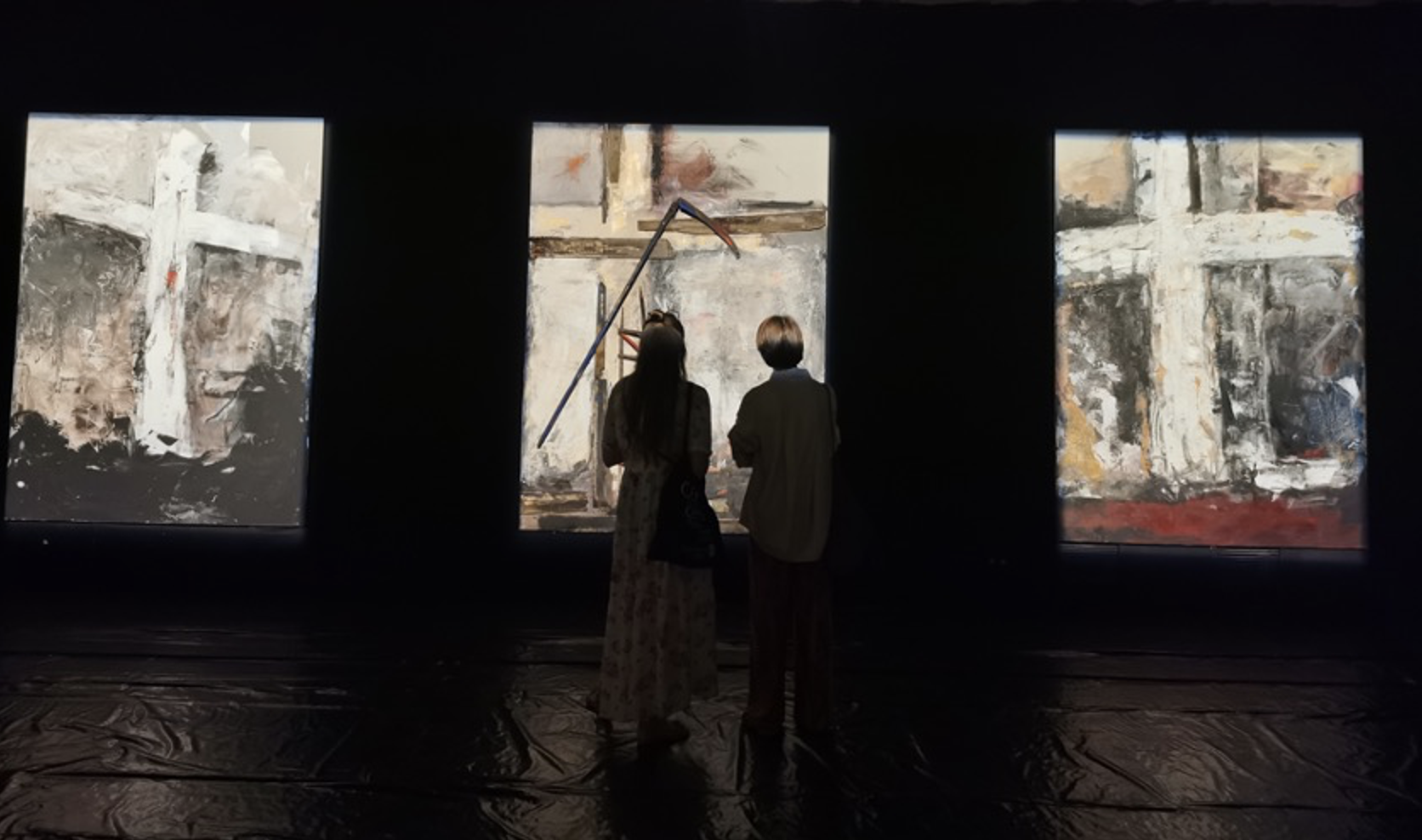
Eugen Raportoru exhibition, Bucharest. Image courtesy of author
Many squint to read the text pinned to the wall, to make sense of the terror being represented. Shivers chill the spine when facing a pile of earth covered with dry flowers, the symbol of a grave. We feel we are witnessing the remnants of a crime.
Several months ago, Eugen Raportoru presented his work at the Venice Biennale’s Roma Collateral Pavilion. There he brought the intimacy of the Roma home under the lens in a playful display of objects frequently seen in Romanian homes before the fall of Ceaușescu. Through his art, he challenged the traditional representation of Roma women and provided a platform to enhance the voices of activists.
With this exhibition in Bucharest, commemorating Second World War Roma victims, Raportoru focuses on a darker aspect to his people’s identity. He is glad that there are many television crews filming this. It’s a chance to start new discussions: ‘Everybody knows the truth, but we shy away from it,’ says Raportoru. ‘We shouldn’t forget these things.’
Past and present discrimination
In Romania, the Roma Holocaust (Porajmos) started with the country’s May 1942 census, a tool that the local fascist regime used to identify what it considered unassimilated or undesirable Roma individuals. Several months later, approximately 25,000 Roma people were deported to Transnistria, now in the Republic of Moldova. 11,000 died while forced to live and work in horrendous conditions.
Many survivors, such as Raportoru’s mother who was deported when just twelve years old, have hidden the horrors they endured from their children. Some have even internalized the stigma that led to their deportation and tried to hide their ethnicity.
This year, Romanian citizens had to submit their details for a new census. The process encountered numerous errors and was heavily criticized for its inadequate planning. But by the end of July, 95,4% of the population was registered. The collected data will be the starting point for how funding and projects will be implemented in the next decade.
For national minorities, substantial numbers can bring better public policies such as those providing more dedicated cultural heritage classes and activities in schools. But when it comes to affirming Roma identity, things are more complicated. Both historical and current discrimination make many fearful to publicly acknowledge they are Roma.
Only fourteen EU countries recognize Roma as a national minority, Romania being one of them. Officially, there are 621,600 Roma in Romania, representing 3.3% of the population; they are considered the second largest national minority after Hungarians. However, it is estimated that the real number of Roma people in Romania is almost three times higher than the official number, ranging between 1.5 and 2 million.
During the pandemic, the cases of abuse against Roma civilians have increased. A BIRN investigation shows how far the Roma community is from having its own Black Lives movement. In the US, social media became a tool for societal uproar towards injustice. In Romania, a video of Roma civilians being tortured by several policemen has ignited a huge wave of hate speech towards the victims. Recent research states that one in five Romanians openly shows their prejudice towards Roma people.
Unrecognized slavery
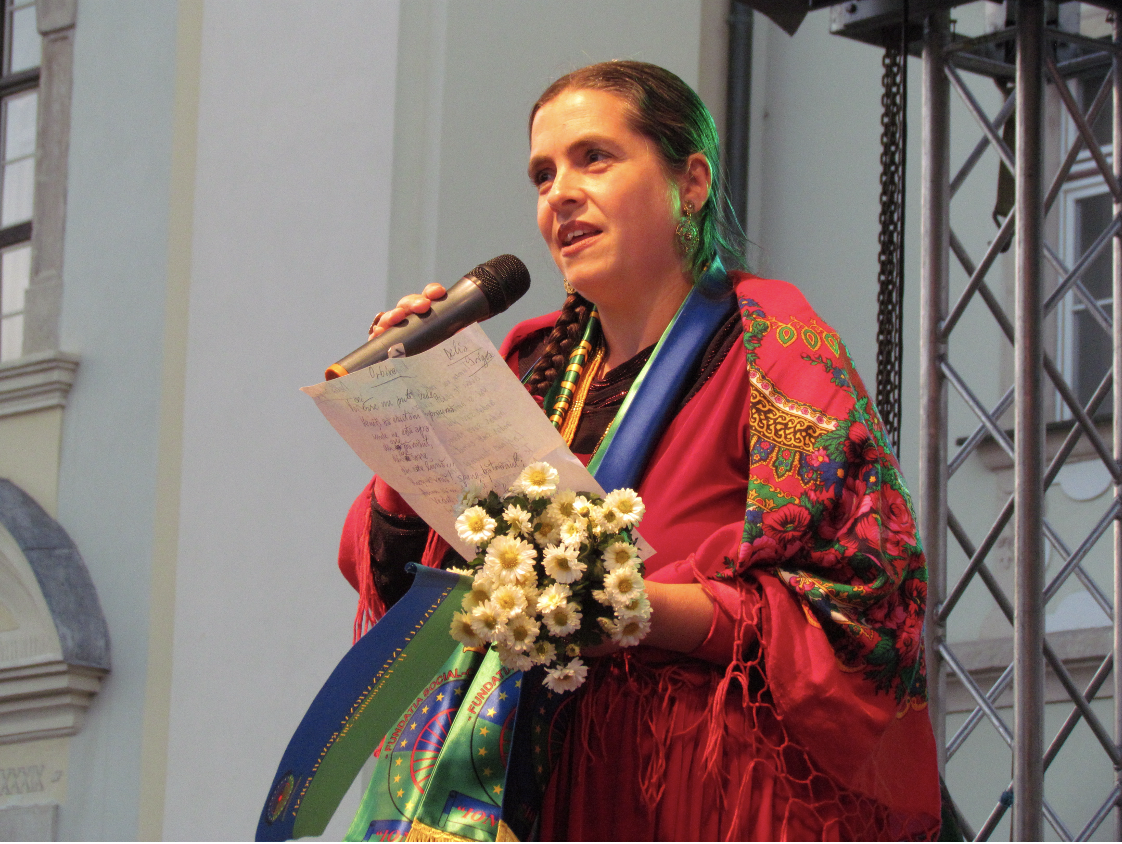
‘If we don’t know our historical traumas, we cannot understand ourselves. We remain captives,’ Delia Grigore. Image courtesy of Delia Grigore
Few understand that this present wave of hate is just another episode in a long history of persecution. Both the Roma minority and the Romanian population are influenced by a past unknown to many. The Roma community was enslaved for 500 years in the land now known as Romania.
‘A human was seen as an animal or an object … sold, weighed, inherited and donated,’ says Delia Grigore a Roma activist and professor of Romani literature and culture at the University of Bucharest. Between 1385 and 1865, Roma people were seen as less than human, as tools to serve their masters. ‘This has left deep marks on the Roma and Romanian collective memory,’ continues Grigore.
Appointed rulers, nobles and the Orthodox Church owned slaves. Foreigners who passed through the lands were horrified by what they were witnessing, describing in their memoires the cruelty of their hosts. The nobles could do whatever they pleased to the Roma women they inherited or were given. The slave’s body was the property of the master.
However, children don’t usually learn about this in school. Instead, leaders such as Stefan the Great, who was sanctified by the Orthodox Church, are presented as heroes, not as slave owners. The National Museums don’t display any information in their official galleries regarding five centuries of enslavement.
As the president of a Roma cultural association, Grigore has written numerous letters addressed to the current patriarch of the Orthodox Church, asking for public acknowledgement of the Church’s historic crime. However, the Church refuses to act. Its leaders usually blame the different values of that period and the past political system, undermining the gravity of the situation.
‘I live in fear … in a country that doesn’t represent me, where everything around me is false,’ says Grigore. This falsified history enhances the identity crisis that she sees in the Roma community. By not learning this information in school, Roma people end up not knowing themselves. They internalize the surrounding stigma and develop a negative self-image. Some see their ethnicity as undesirable, ending up hating or rejecting it.
The effects of past power dynamics are still visible today. Instead of treating the Roma community as a national minority, many treat it as a social class. This way, Roma identity is constrained to a vulnerable image – the poor, the beggar.
Many Romanians call Roma Țigan, which comes from the Greek athinganos/athinganoi, meaning impure or untouchable. On the use of this derogatory term, sociologist of Roma origins Gelu Duminică says, ‘This debate is about the majority’s power to do what it pleases, even if the minority says it is not ok.’
In his office, Duminică explains how absurd the whole situation is. ‘I have multiple identities. I am a sociologist, a man, a son, a partner and so on. Among these identities, there is also an ethnic one. Can you believe that I am judged just by my ethnic identity? That everything I do is seen through the perspective of my Roma identity? Which is absurd. It is racism in its purest form.’
The local authority has done little to encourage Roma people to manifest their identity in public. Duminică thinks we should be alarmed that only a few people declared they are Roma during the 2011 census. We should ask ourselves how unsafe is a society where people feel the need to hide their identity.
Paul is one of these people. He is proud of his Roma origins and doesn’t hide his identity among friends. However, Paul has refused to fill out the census because he is afraid of what might happen to him. ‘I have zero trust in authorities – zero’, says Paul.
One of Paul’s grandmothers was deported to Transnistria in 1942. She was only nine and the only one who survived from her family. Paul never heard the full story, only fragments. No one in his family has ever talked openly about it. Even so, he is afraid of authorities. He believes that if history would repeat, Romanian people would show the same disregard of Roma lives.
A place for the undesirable
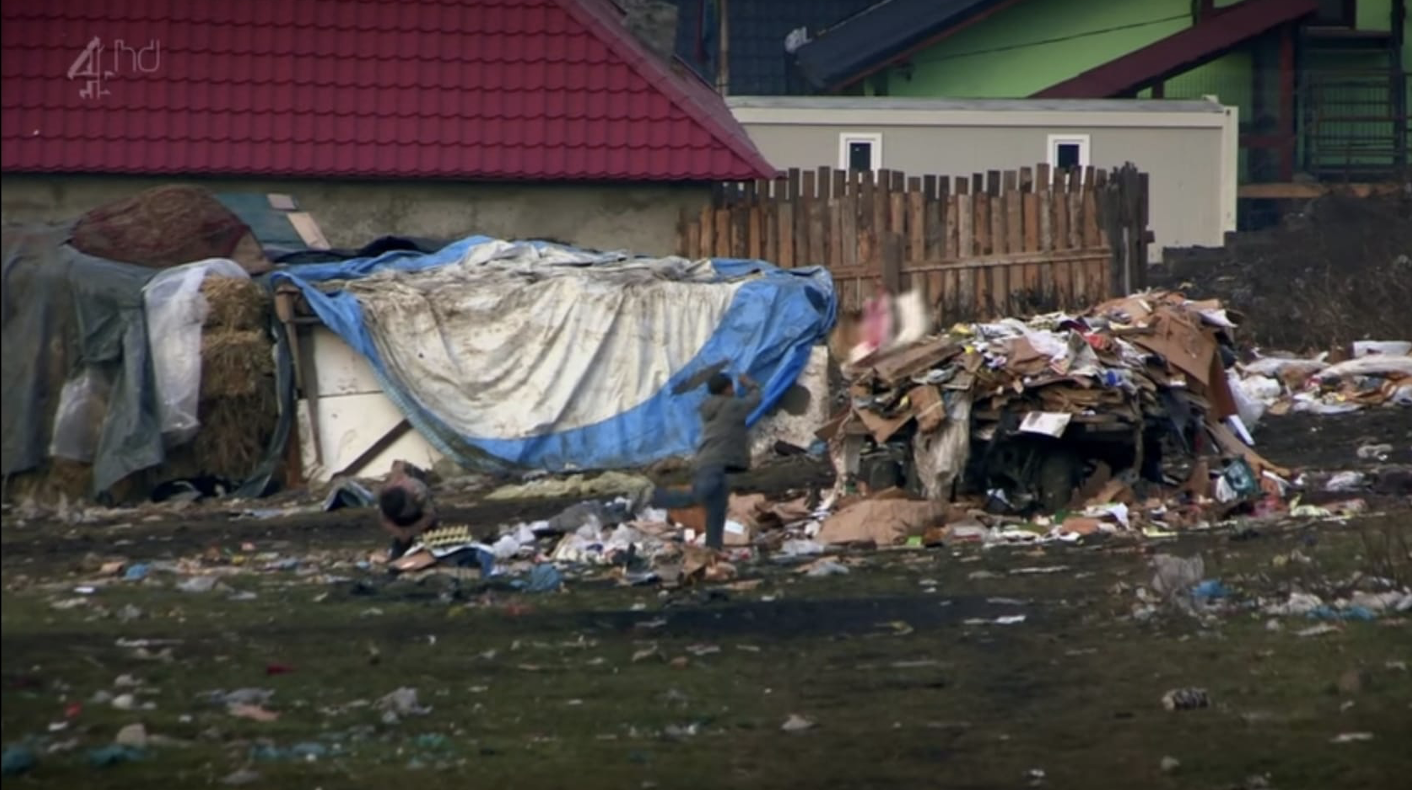
‘The Romanians are Coming’, Channel 4, UK. Author’s screenshot
Google ‘Pata Rât’ and the first thing that will appear on your screen is the description of a ‘garbage dump in Cluj-Napoca’. Yet the area is also inhabited, a ghetto next to one of Romania’s most beautiful and prosperous cities. Journalists are not usually welcome; in the past, some publications have exploited the image of locals, presenting them as exotic and publishing, without any consent, pictures of naked children eating garbage.
There are four settlements: Dallas, Cantonului Street, New Pata Rât (or Green Hill) and Plane Trees Street. Each one has a different story of origin, the oldest dating back to the 1960s, when Romania was under communist rule. 2,000 people live in Pata Rât. More than 70% of the inhabitants are of Roma origin.
‘Pata Rât is the result of the discrimination, racism and structural violence of authorities’, says István Szakáts, project manager of Radio Pata. For many years Szakáts was involved in projects helping inhabitants of the ghetto. Radio Pata is the latest, created as an instrument of automobilization and information for the community. It was made possible with Norwegian funding.
Szakáts calls Pata Rât a ‘major pain in the arse’ for Romanian authorities that nevertheless were instrumental in creating it. He doesn’t shy away from strong images. ‘I bet that if they could, they would use napalm to finish it.’ Even if they did, he thinks that Pata Rât would still regenerate. Szakáts stresses how the ghetto is the result of the ferocious neo-liberal capitalism that shapes Cluj-Napoca.
‘This city produces poverty, and at the same time wants to get rid of the poor,’ says Szakáts. An IT-haven, voted as European Youth Capital in 2015, Cluj-Napoca is well known for its exorbitant cost of living, with one of the highest rental markets in Romania. Szakáts also calls Pata Rât the ‘poverty reservoir’ of Cluj.
Szakáts is a member of the Szekler community, which is a Hungarian minority. He knows how different his experience is from that of a Roma person. ‘We take great pride in being Szekler,’ he says, ‘it is an identity that gives you privileges here.’
This is not the case for the Roma minority. ‘It is a huge existential risk to publicly identify yourself as a Roma. It messes up your chances of being hired, your chances to be a member of some groups. People start questioning your work ethics and your hygiene. It is like shooting yourself in the foot.’
Illegal deportation
‘I don’t know if you can see it’, says Elena Greta, pointing her camera to the green hills that surround Cluj-Napoca. It is a sunny summer’s day in her garden. Beside the trees she planted are clothes carefully placed on the line to dry, next to a red rug. Greta points towards what look like hills from a distance: ‘There are the piles of garbage.’
Greta is one of the community facilitators who work for Radio Pata. She is pleased to work together with Szakáts for the station, where people from Pata Rât can say what they think and feel. It is also a channel for local news. ‘People are glad that we finally have a radio for Roma people,’ says Greta.
She lives with her family on Plane Trees Street. They are among the 76 Roma families that sued the City Hall of Cluj-Napoca at the European Court of Human Rights in Copenhagen after they were illegally moved from Coastei Street to Pata Rât in the winter of 2010.
Pata, a book written by researchers and activists in 2016, describes how the City Hall prepared for the eviction and how it handled it in an abusive way. Coastei Street, situated on a hill next to the city centre, was seen as a development asset for the city hall. In 2009 an eviction plan was put forward.
‘Oh, my!’ Greta said when asked for the millionth time to tell the story of how she was forced to move to Pata Rât one week before Christmas. Her voice is warm and she frequently says ‘my dear’, but when she speaks about that night, you can see a storm of emotions on her face.
On 15 December someone from the city hall came to inform Greta’s family that they would be relocated. They lived in a big house on Coastei Street, where they had all the facilities to raise their four children well. Neither parent was home and only later did they find out that their signature had been forged on the eviction notice papers.
Two days later, cars and police officers arrived to pick up the families living on Coastei. ‘It was 3 to 4 in the morning when they surrounded us,’ she said. They weren’t able to take anything with them and were forced inside ambulances, garbage trucks and vans. Greta’s four children were crying next to her: ‘They wanted to go home.’
They were taken to Pata Rât, where the temperature was -25°C and the snow knee deep. ‘They didn’t let me and the children in, until I signed the contract outside.’ The new property documents stated that her family owned two rooms and a kitchen. When Greta was allowed to enter, she saw only a 16m2 room. She had to share it with 13 people.
‘I used to be healthy. I never was sick, believe me!’, says Greta. ‘Now I take 9 types of pills.’ Next to the city dump is another one for chemical waste. The air is toxic and many got sick. Greta mentioned numerous people that had died leaving older relatives to fend for the orphans. Many children have a stomach bacterium and doctors don’t know how to treat them. ‘There is nothing good in Pata Rât’, she repeats again and again during the interview.
Childhood experiences
‘There isn’t a big difference between what happened to us and what happened during Nazi times,’ says Alex Fechete, who was also deported that night. Several Cluj-Napoca residents celebrated the authorities’ abuse of power, even lighting fireworks from the rooftops. ‘We were lucky that we were deported in modern times,’ he said, ‘we had already been in the EU for three years.’
Fechete is the narrator to the Channel 4 documentary The Romanians are Coming, which challenged the way British people viewed Romanians before Brexit. As Greta, he recognizes institutionalized racism. He wasn’t surprised by it.
‘Every Roma born in this country, in this city, knows about this,’ says Fechete, referring to the prevalent racism. As a boy, he saw how he was discriminated against but didn’t understand why, adding: ‘I compared my skin to the Romanian’s who was sitting next to me in class and I couldn’t see a difference.’
To be a child in Pata Rât is a dire experience. Some never leave the ghetto. Those that go to school in Cluj and see the city centre are the happiest when they are away, in Greta’s opinion. For a moment, they forget about their misery. ‘They are sad when they return home. They ask their parents what they did to deserve this. They haven’t hurt anyone,’ Greta adds.
She recalls how difficult it was for her to send her children to school after they were moved to the ghetto. ‘My kids started to get behind with their studies,’ says Greta. They didn’t want to go to school because they were called gypsies and mocked for living in Pata Rât. When it was raining, the children were muddy from walking in the fields to get to the bus stop. The teachers made them the laughingstock of the class: ‘“Pata Rât kids, go and wash your shoes”, they said.’
Radio Pata recently organized Pata Has Talent, an imitation of the Britain has Talent contest. The initiative, which took place during the festival Kethane (‘together’ in Romani), encouraged greater community involvement in the first step towards what Szakáts sees as a solution for the local community. Indeed, the contest featured well-known Roma artists, was supported by a numerous audience and was considered a success by several publications.
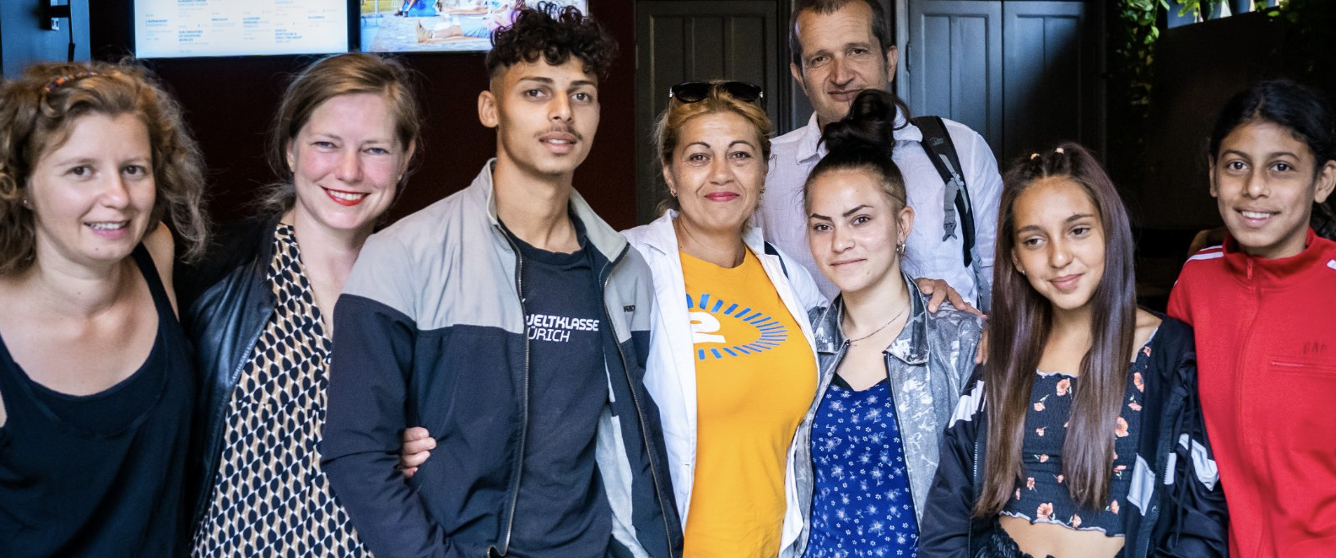
‘Pata Has Talent’, Radio Pata. Greta Elena (centre) and István Szakáts (rear). Photo courtesy of Radio Pata
Cultural victories
‘Pata Rât is the visible part, and it looks way better than other regions in the country,’ says Gelu Duminică in his office in Bucharest. Working with communities all around the country, he has seen people living in terrible conditions. In Constanța, people live underground in clay houses. Baia Mare and Bucharest also have ghettos.
Nevertheless, Duminică takes an optimist view on how things look for the Roma community today, without dismissing its hardships. Roma activists have won significant victories. In 2009 they sued the Romanian Academy for not mentioning the derogatory meaning of țigan in the official Romanian dictionary. The word’s definition, listed as ‘someone who behaves badly’, was changed when the case was won.
After long debates, an optional case study about Roma slavery and the Holocaust was finally included in schoolbooks. They also fought against school segregation. A podcast about Roma slavery has become the most listened to programme in Romania.
Grigore and Duminică are taking part in another project developed with Norwegian funds. It is intended to educate both Roma and non-Roma members. A virtual Roma Culture Museum is included in the project. ‘We don’t want to be Roma only in our homes’, says Grigore. ‘We want to publicly show our culture.’
The museum is an extraordinary cultural achievement for Roma activists in Romania, one that took years to develop. Some time ago, there was a physical Roma museum focused on traditional trades. However, it was difficult to finance and was ultimately closed after a fire.
The virtual format of the upcoming museum requires less funding. It also gives more flexibility to its creators, including facilities such as VR. The museum will have eight virtual rooms. The viewer’s journey will start in India and move through slavery, the abolition, the Holocaust and the communist regime. It will also display several future plans and a history of anti-Roma racism.
More people will get to know how the Roma community has influenced local and global culture. They will learn not only about the musicians that inspired well-known composers such as Béla Bartók, Frantz Liszt and George Enescu but also poets, sculptors, actors and more. Eugen Raportoru will feature among them.
